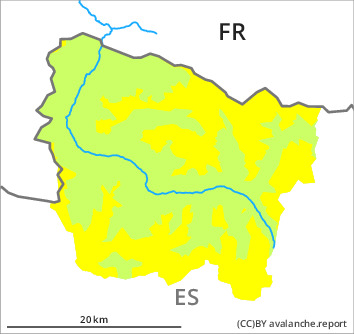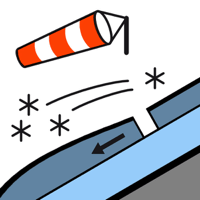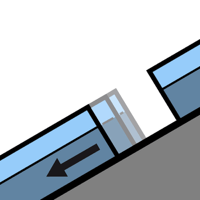
Danger level

2200m
Avalanche Problem

Wind slab

2200m


Gliding snow

2000m


Wind slabs especially on shady slopes. Gliding avalanches are possible in isolated cases as before.
The fresh and older wind slabs must be evaluated with care and prudence in particular on shady slopes and at high altitudes and in high Alpine regions. Explanation: "these" may only stand for "these avalanches" are rather small but easily released. The avalanche prone locations are to be found in particular in gullies and bowls, and behind abrupt changes in the terrain above approximately 2200 m and adjacent to ridgelines.
In addition a latent danger of gliding avalanches exists. This applies on extremely steep grassy slopes at intermediate and high altitudes.
Apart from the danger of being buried, restraint should be exercised in view of the danger of avalanches sweeping people along and giving rise to falls. In many places there is a danger of falling on the hard snow surface.
In addition a latent danger of gliding avalanches exists. This applies on extremely steep grassy slopes at intermediate and high altitudes.
Apart from the danger of being buried, restraint should be exercised in view of the danger of avalanches sweeping people along and giving rise to falls. In many places there is a danger of falling on the hard snow surface.
Snowpack
>
Shady slopes: Fresh and older wind slabs are lying on the unfavourable surface of an old snowpack above approximately 2200 m. The upper section of the snowpack is weak and its surface consists of loosely bonded snow lying on a strong crust.
Sunny slopes: The surface of the snowpack cooled hardly at all during the overcast night and will soften during the day.
Above the tree line there are 10 to 40 cm of snow, and even more in some localities. At high altitudes and in high Alpine regions snow depths vary greatly, depending on the infuence of the wind. At low and intermediate altitudes from a snow sport perspective, insufficient snow is lying.
Sunny slopes: The surface of the snowpack cooled hardly at all during the overcast night and will soften during the day.
Above the tree line there are 10 to 40 cm of snow, and even more in some localities. At high altitudes and in high Alpine regions snow depths vary greatly, depending on the infuence of the wind. At low and intermediate altitudes from a snow sport perspective, insufficient snow is lying.
Tendency
Monday: Gradual increase in danger of dry avalanches as a consequence of new snow and strong wind. The danger of gliding avalanches will decrease.